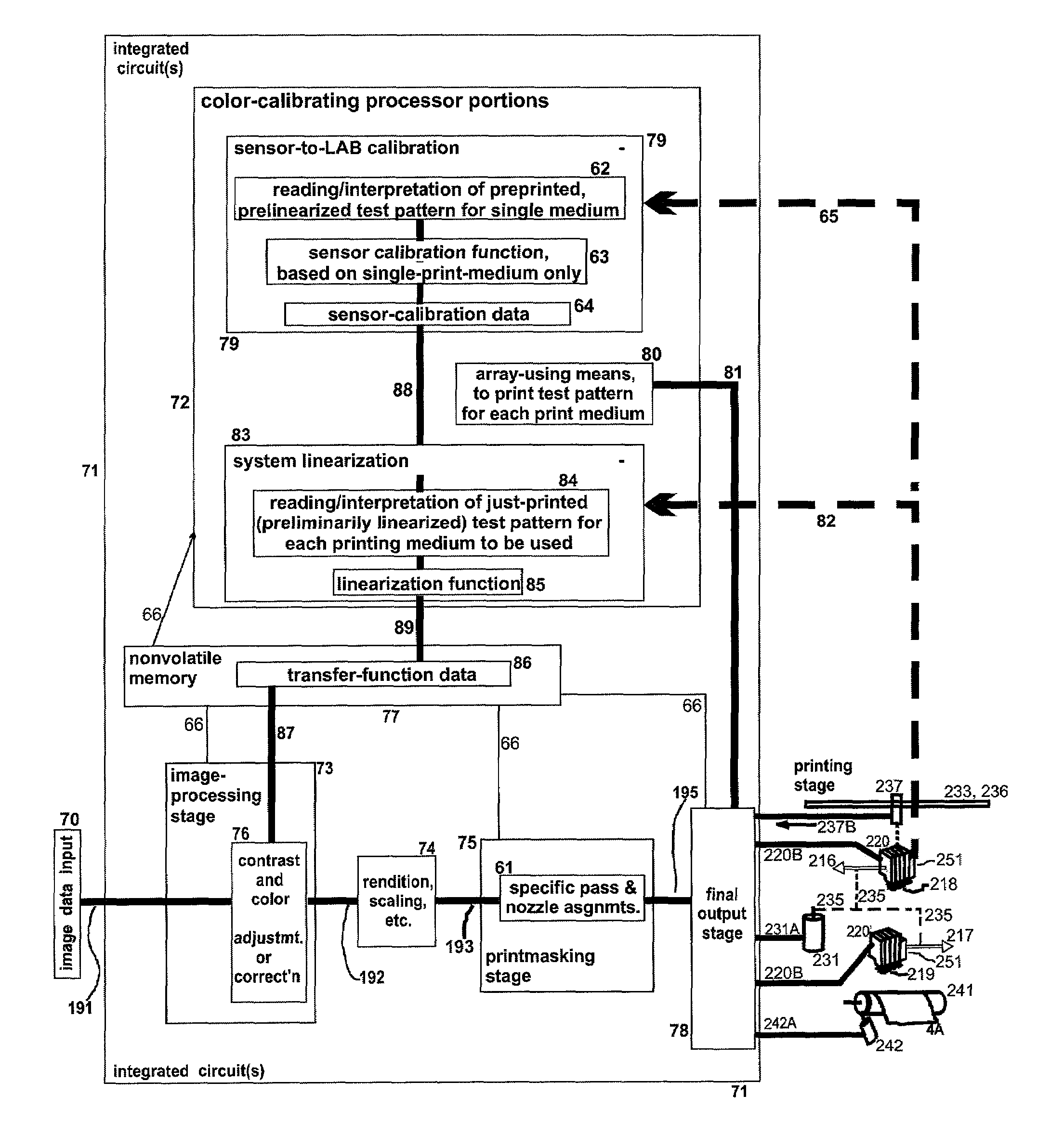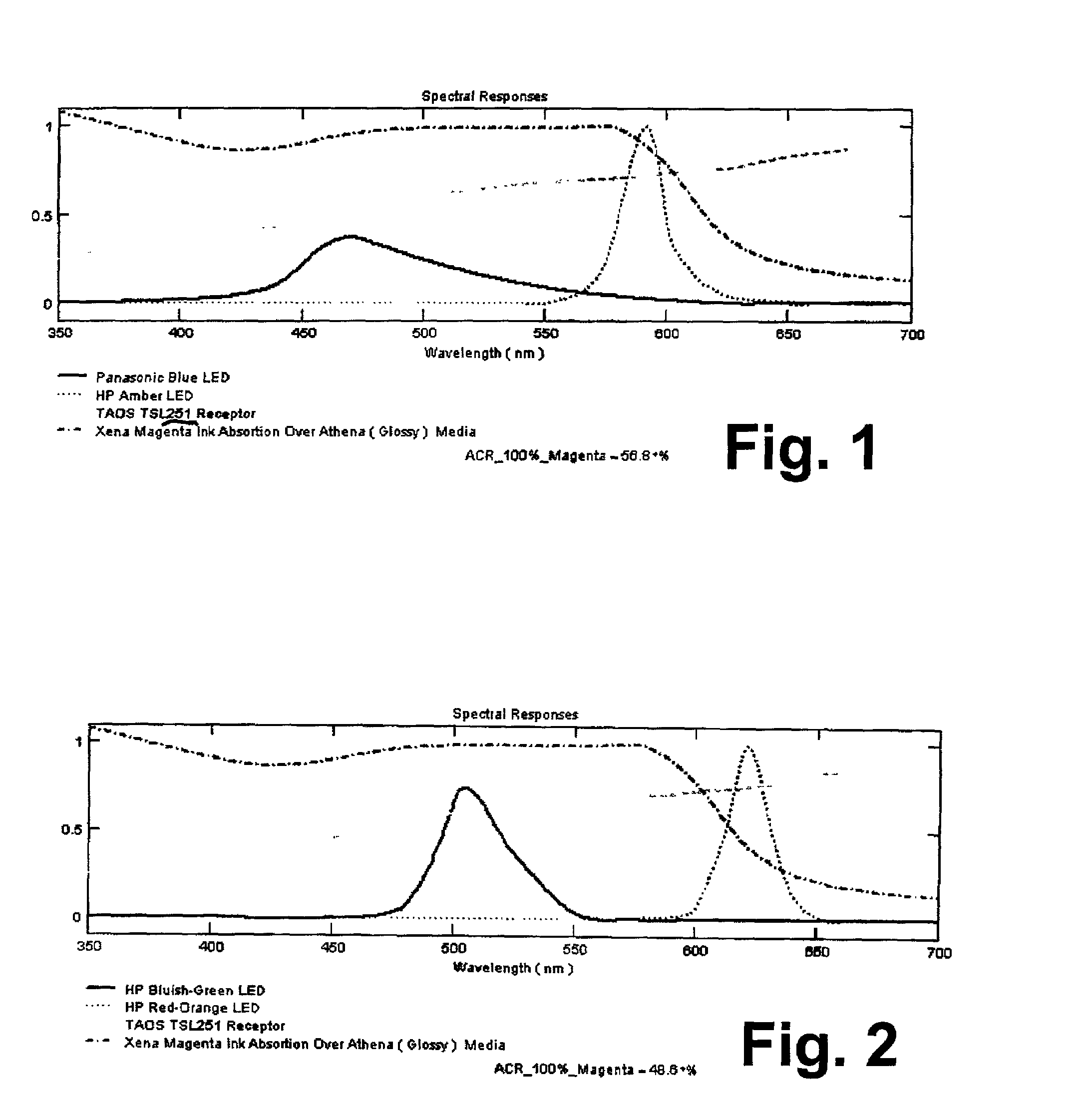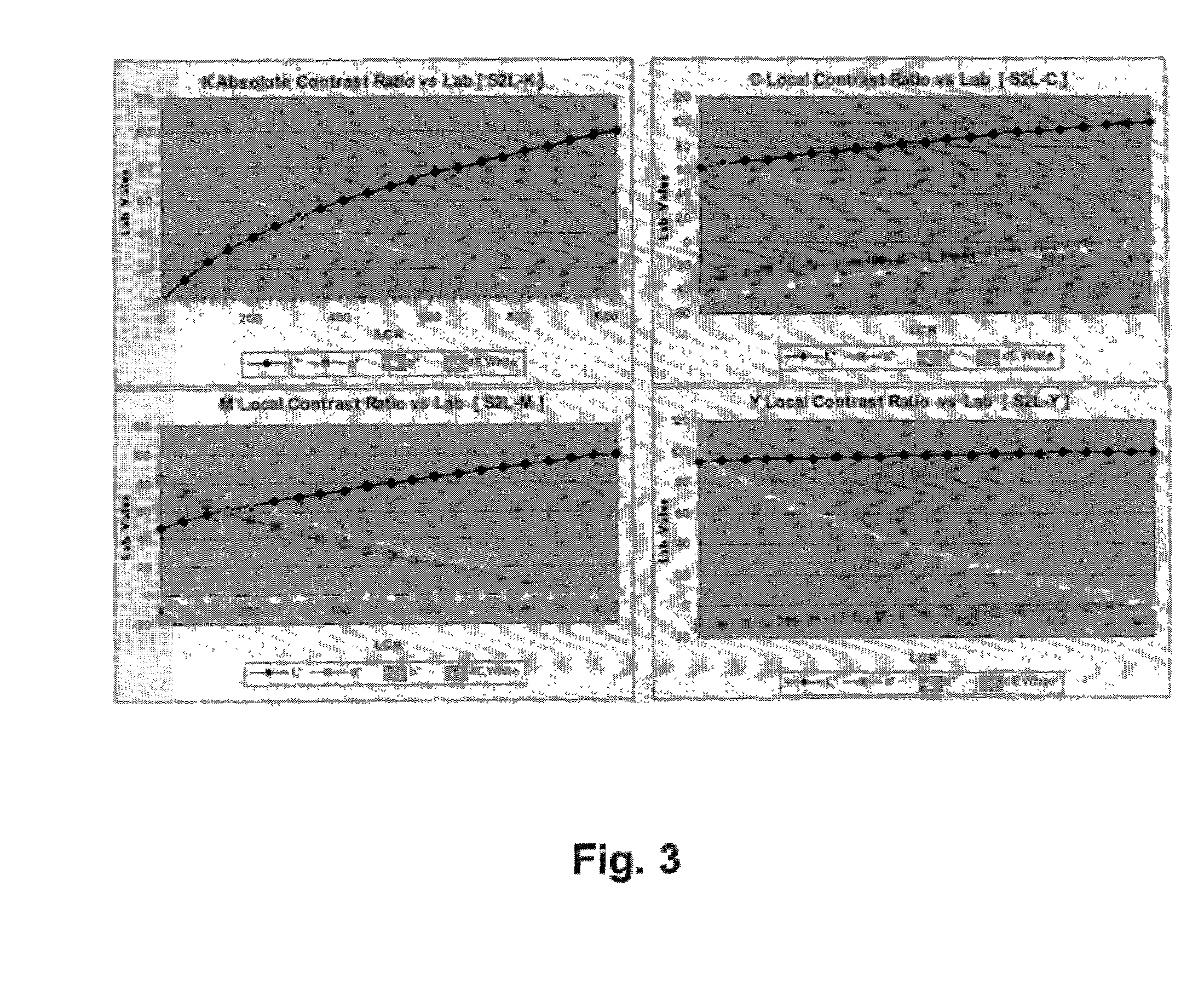Linearization of an incremental printer by measurements referred to a media-independent sensor calibration
a technology of incremental printer and measurement, applied in the field of linearization of incremental printer by measurement referred to a media-independent sensor calibration, can solve the problems of exposure-time control, and high cost of each make-ready apparatus, and achieve the effect of facilitating sensor calibration
- Summary
- Abstract
- Description
- Claims
- Application Information
AI Technical Summary
Benefits of technology
Problems solved by technology
Method used
Image
Examples
Embodiment Construction
1. Sensor Calibration for all Media in Common
[0115]In prior incremental-printer products and procedures, as discussed in the “Background” section of this document, it has been conventional to use a line sensor and to provide a separate calibration of that sensor for use with each different printing medium. The present inventors are aware of prior Hewlett Packard commercial products that operated in this way, based upon factory calibrations common to a whole product line—and saved in the printer memory.
[0116]The media-dependent sensor calibrations (i. e. appropriate to particular media respectively) were to be invoked in preparation for each relinearization of the printing system—and this was possible only for media known to the printer manufacturer at the time of product distribution. These calibrations were also limited in accuracy because of the manufacturing tolerances in ink sets and printheads actually placed in service in the field.
[0117]The present invention eliminates both t...
PUM
 Login to View More
Login to View More Abstract
Description
Claims
Application Information
 Login to View More
Login to View More - R&D
- Intellectual Property
- Life Sciences
- Materials
- Tech Scout
- Unparalleled Data Quality
- Higher Quality Content
- 60% Fewer Hallucinations
Browse by: Latest US Patents, China's latest patents, Technical Efficacy Thesaurus, Application Domain, Technology Topic, Popular Technical Reports.
© 2025 PatSnap. All rights reserved.Legal|Privacy policy|Modern Slavery Act Transparency Statement|Sitemap|About US| Contact US: help@patsnap.com



